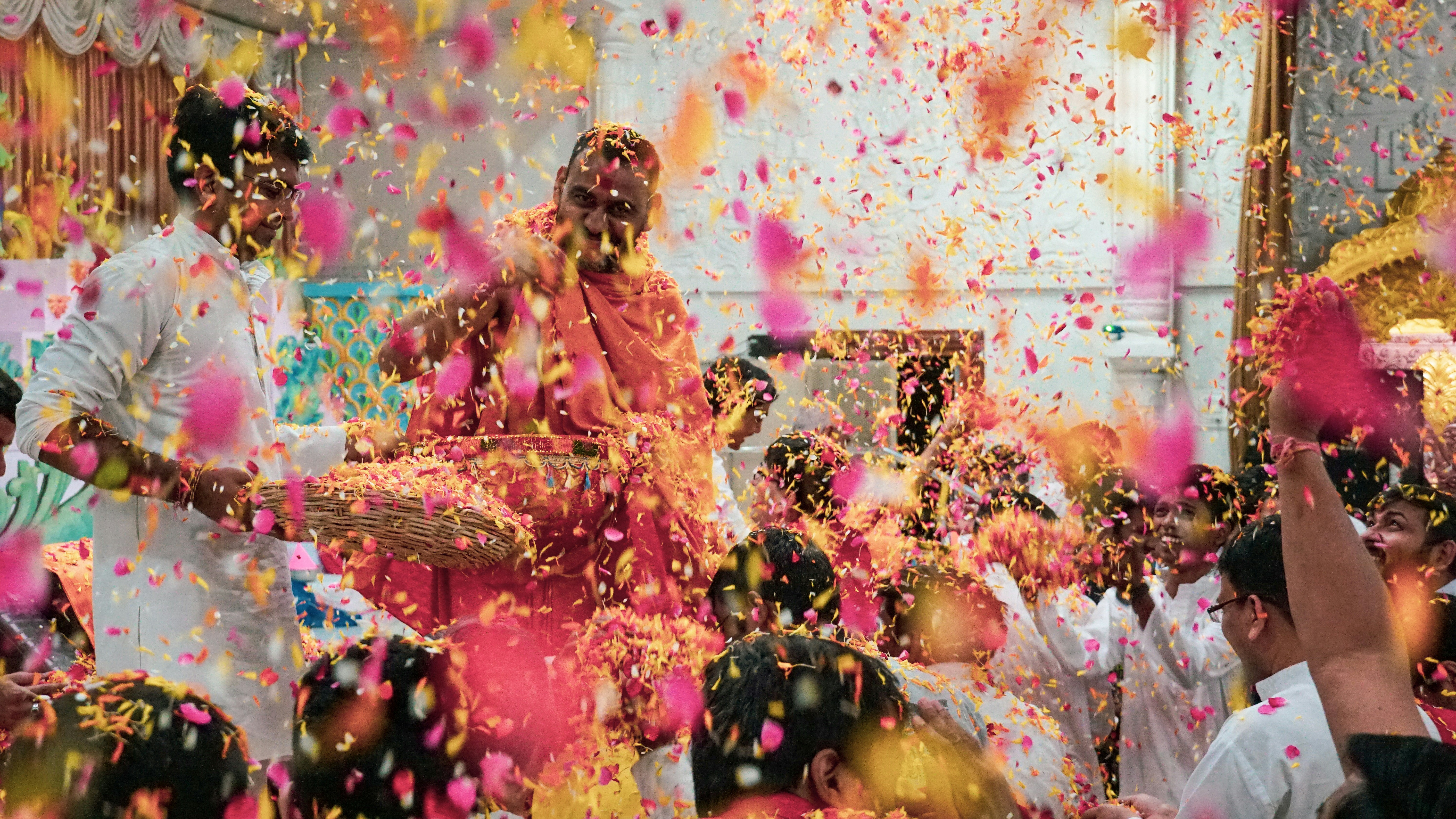by Sangeeta Raja
The festival of colour, the triumph of good over evil and the end of Winter have just passed, but what actually is the Holi Festival?
This festival is celebrated all over the world, mainly by the Hindu faith, every year and sees communities come together to embrace the end of winter and good fortune. As a festival, it has been celebrated for centuries but has developed and modernised over time with new traditions and festivities being incorporated into it. The festival starts with the lighting of a bonfire that is a symbol of burning away all the bad and allowing yourself to give way to a vibrant and diverse future. Hindus go to temples to offer coconuts, clothes, and items they no longer want to the fire as it shows they are letting go of things that no longer serve them and allowing themselves to be open to new opportunities.
With the progression of the festival and the part that is most known by all, participants throw vibrant coloured dye into the air and at people which, in a religious sense, symbolises new life. This festivity is often the most enjoyable as it allows people to let go and feel free in themselves. It shows how they wish to cleanse themselves of all evil and start fresh. With big crowds, water guns, music, dancing, coloured dye, and many dishes of food; it’s a time of happiness and togetherness for all Hindus and all those who celebrate because those who have gathered together are seen to be letting go of all troubles and inhibitions that they have.
The story behind this colourful and vibrant festival is fascinating as it stems from a marriage that wanted prosperity and good fortune throughout. As the festival has developed this has encompassed the wanting of good over evil and has tied itself to the Hindu story of Radha and Krishna. Many Hindus see Krishna as the supreme god because he drank poisonous milk as a baby that turned his skin blue, and he feared he would never be loved but Radha came along and allowed Krishna to dye her skin with colour to show her love for him. Throwing coloured powdered dye on each other stems from this and still honours Krishna and Radha.
There is also the story of Prince Prahlada and his father Hiranyakashipu who saw himself as the one true God, but his son did not and got set on fire by his aunt under instruction from his father but got saved by Vishnu and the flames killed the aunt instead, which is where many think the name originates from.
This year at Royal Holloway there were celebrations on Founders Field hosted by the Hindu society at Royal Holloway, that saw students participate in throwing dye at each other, dancing and singing to music, eating traditional sweets and foods, and celebrating those around them. There was also a Holi event hosted in the Student Union by ‘Desi Beatz’ that saw UV cannons, face paint, glowsticks and decorations being used in the venue to add to the festival.
From the festival starting as a celebration of the end of winter and a triumph of good over evil, it has come a long way in how it is celebrated today with different traditions and celebrations being held all over the world to celebrate Holi Festival.
If you’d like to read more about the Holi Festival head to the BBC and VolunteerForever!
Written by Sangeeta Raja, Edited by Paige Tamasi, Photography by Dharmesh Patel through Unsplash License, Published by Paige Tamasi.
